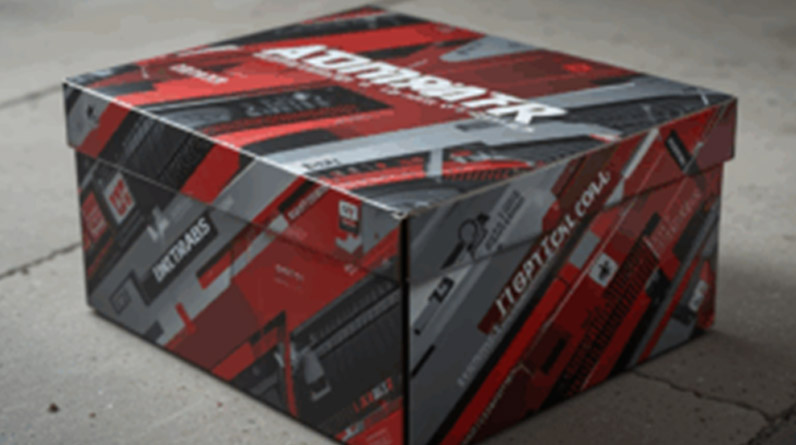In the vast world of product packaging, certain designs stand the test of time for their perfect blend of simplicity, functionality, and elegance. You’ve seen them everywhere, holding everything from a deck of playing cards to a luxury face cream. This classic and incredibly versatile packaging style is known as a tuck box, and it remains one of the most popular choices for brands across countless industries. Its clever, self-locking design requires no glue or tape, making it an efficient and cost-effective solution that still offers a premium feel.
This guide is designed to be a comprehensive introduction to this essential packaging style. We will deconstruct its anatomy, explore its different variations, and delve into why it has become a go-to choice for businesses both large and small. Whether you are a product developer, an e-commerce entrepreneur, or simply curious about the world of packaging design, understanding the fundamentals of the tuck box is key to appreciating its enduring appeal.
1. The Anatomy of a Tuck Box: Simple, Secure, and Effective
At its core, a tuck box is a marvel of paper engineering. It is typically constructed from a single piece of paperboard that has been die-cut and scored to fold into a secure container. The defining feature is its closing mechanism. The top and/or bottom flaps are designed with a small tab, or “tuck flap,” that slides into the main body of the box, holding it closed without the need for any external adhesive. This creates a clean, seamless look that is both professional and user-friendly.

2. The Two Main Styles: Straight Tuck vs. Reverse Tuck
While there are many variations, tuck boxes are generally categorized into two primary styles. The Straight Tuck End (STE) box has both the top and bottom tuck flaps folding from the same side of the box (usually from back to front). The Reverse Tuck End (RTE) box, on the other hand, has the top flap folding from the back and the bottom flap folding from the front. While subtle, this difference can impact both the aesthetics and the assembly process, and a professional packaging partner like CustomPrintedBox can help you decide which style is the perfect fit for your specific product and production line.
3. Why is This Style So Popular? The Key Advantages
The enduring popularity of the tuck box is no accident. It offers a unique combination of benefits that make it an ideal choice for a wide range of products. It is extremely cost-effective to produce, especially at scale, as it uses a single piece of material with minimal waste. Furthermore, it is incredibly easy to assemble, either by hand or by machine, which can significantly speed up the packaging process. Its versatility allows it to be adapted to almost any size or shape, providing a secure and professional home for countless different items.
4. Common Materials Used for Tuck Boxes
The material used for a tuck box has a huge impact on its look, feel, and durability. The most common material is paperboard, which comes in several different grades. Solid Bleached Sulfate (SBS) is a premium choice, known for its bright white surface that is perfect for high-quality, vibrant printing. For brands focused on sustainability, Kraft paperboard is an excellent option; its natural, rustic brown look is very popular in the US market, and it is made from recycled materials. The thickness of the paperboard, measured in points (pt), is chosen based on the weight of the product it needs to hold.
5. Beyond the Basics: Customization and Finishing Options
One of the greatest strengths of the tuck box is its potential for customization. It is a blank canvas that can be transformed to perfectly reflect your brand’s identity. High-quality offset or digital printing allows for stunning, full-color graphics. To add a premium touch, you can choose from a range of finishing options, such as a sleek matte or a high-shine gloss laminate. For an extra touch of luxury, techniques like embossing (creating a raised design) or foil stamping can make your packaging truly stand out on the shelf.
6. Ideal Use Cases: From Cosmetics to Card Games
The versatility of the tuck box means it is used across a huge number of industries in the USA. It is the standard for a deck of playing cards or a small board game. In the beauty and wellness space, it is the perfect container for items like soap, perfume, or CBD oil droppers. It’s also a popular choice for small electronics and tech accessories, gourmet food items like chocolate bars, and pharmaceutical products.
7. Designing Your Tuck Box for the US Market
When designing your packaging for the US market, clarity and impact are key. Your branding should be front and center, with a clear, easy-to-read logo. Use the front panel to highlight the single most important benefit of your product. The back panel is the place for more detailed information, ingredients, and any legally required information (like FDA nutrition facts for food items). A clean, modern aesthetic with a focus on high-quality imagery is always a winning formula.
8. The Unboxing Experience: Making a Lasting Impression
In the age of e-commerce, the unboxing experience is often the first physical interaction a customer has with your brand, and a well-designed tuck box can make it a memorable one. The satisfying feeling of un-tucking the flap and revealing the product inside is a small but significant moment. By using high-quality materials and a beautiful design, you can create a premium experience that reinforces the customer’s decision to buy from you and helps to build lasting brand loyalty.
9. Sustainability: An Eco-Friendly Packaging Choice
As consumers in the US become more environmentally conscious, sustainable packaging is no longer a bonus—it’s an expectation. Tuck boxes made from paperboard are an excellent eco-friendly choice. Paperboard is a renewable resource, and it is easily recyclable in virtually all municipal recycling programs across the country. By choosing a tuck box, especially one made from recycled Kraft paper, you are sending a clear message to your customers that your brand cares about the planet.
10. Is a Tuck Box Right for Your Product?
To determine if a tuck box is the right choice for you, consider your product’s weight, your budget, and your brand’s aesthetic. This style is ideal for lightweight to medium-weight items that need a professional, retail-ready look without the high cost of more complex packaging. Its ease of assembly makes it perfect for businesses of all sizes, from small startups to large-scale operations. If you are looking for a classic, reliable, and highly customizable packaging solution, the tuck box is an outstanding choice that has proven its worth time and time again.



